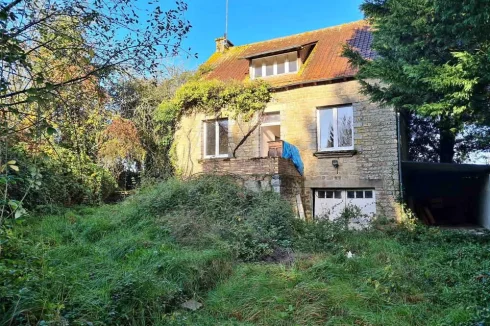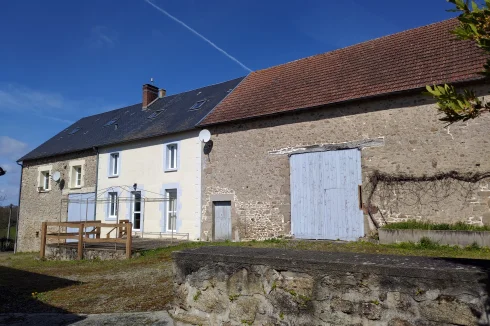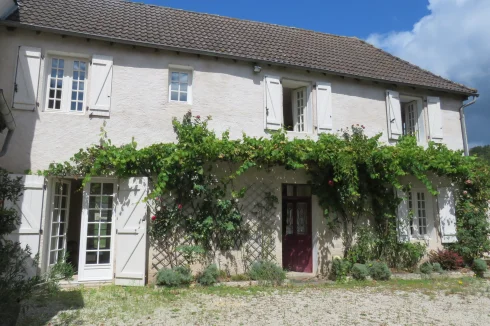Building on Agricultural Land in France
Thursday 07 March 2019
Construction in open countryside in France is generally not permitted, but as always there are exceptions.
As is the case in most other countries, national planning regulations in France constrain new development in the open countryside for all but agricultural use, giving priority to protecting farmland and the natural environment.
However, the national framework is only broadly defined and it is left up to local authorities to determine just how they wish to zone land under their jurisdiction, how they interpret an agricultural activity and just which type of development they are prepared to accept.
As a general rule, as Arthur Cutler of planning consultancy French Plans states: "the planning framework is becoming tighter, particularly with the emergence of new inter-municipal councils. Their plans cover a much larger geographical area, with a tendency to reduce the scope for rural development."
Accordingly, the starting point for determination of the rules that apply is the local plan, which come in various forms, whether the now largely superseded Plan d’Occupation des Sols (POS), a Plan Local d’Urbanisme (PLU) or the more limited Carte Communale, which is more familiar in rural areas.
In addition, there may also be in place a risk prevention plans called Plan de Prévention des Risques (PRR), which are becoming very powerful documents.
Where there is no local plan, then the national regulations must be applied and new construction for residential use will only be permitted in continuity with existing development.
New Dwelling
Whilst it is generally not too difficult for a farmer to obtain planning consent for an agricultural building through a frequently sympathetic local council, there is less certainty when it comes to consideration of a new dwelling alongside any such building.
The application will then turn on the issue of necessity, something which is not defined in law, and which can only be determined on a case-by-case basis.
As a general rule, however, new construction for residential use alongside the agricultural building will only be permitted where there is a direct link with the activity being pursued and the necessity for a continuous presence on site.
The main factors a planning authority will be obliged to consider are the size of the operation and the nature of the activity.
Some recent legal cases help illustrate the process.
Thus, in a case heard in the Haute-Vienne, Limoges an applicant who was registered with the chambre d’agriculture made application for construction of a workshop to be used for a snail farm, together with a dwelling alongside it.
The application was rejected by the local council who considered that the scale of the activity was not significant and that there was no necessity for the applicant to live on-site.
In doing so, they cited their local plan which forbids "la réalisation de constructions ou de dépôts, l'aménagement ou l'agrandissement des constructions existantes à usage d'habitation si elles ne sont pas liées à l'activité agricole ou à l'hébergement des personnes travaillant sur l'exploitation"
The case finally ended up in the Supreme Administrative court, the Conseil d’État (CE), who ruled that that the proposed activity was not significant enough to warrant a dwelling. The fact that the application was supported by the local chambre d’agriculture, was not by itself sufficient proof.
It is worth noting in this case that the applicant also happened to be a registered architect, an activity he proposed to continue alongside the snail farm.
Similarly, in another recent case, the mayor of the town of La Livinière in the Hérault refused to grant planning consent to an applicant to rehabilitate and extend a 'winegrower's house' on the grounds that the land was located in an area zoned for agricultural use in the local plan, and that it was not served by public drinking water or sanitation.
The Conseil d'État rejected the appeal against the refusal of planning consent.
In coming to their decision the CE looked at the size of the business and the nature of the activity to verify that the construction was necessary, when they determined that it could not be considered an agricultural holding as:
- the applicant did not specify the specific conditions of his wine-growing activity;
- he worked as a garage mechanic 140 km from La Livinière;
- the areas he cultivated (4 hectares) was significantly smaller than the minimum installation area in the Hérault for vine cultivation.
Whilst such cases illustrate that an agricultural activity does not automatically validate the need for a house, councils and courts are more sympathetic where the activity concerns livestock, where a permanent presence on-site for surveillance would be considered necessary. In such cases, permission for a dwelling is more regularly granted.
Conversion
The local plan may also authorise buildings where a change of use may be permitted, provided such a change of use does not compromise agricultural activity or the quality of the landscape.
In giving consideration to an application or change of use, the council must also have regard to condition of the existing building, the services available, and changes that may be envisaged to the volume of the building.
Thus, in a case concerning an application for rehabilitation/conversion of an abandoned stone-built sheepfold (bergerie) into a dwelling the planning authority refused the application on the ground that the building had agricultural status.
The local plan only permitted works aimed at improving the comfort and solidity of the existing residential properties in the countryside.
However, given that the building had been constructed in the 19th Century, before a planning regime was in place, the courts ruled that the council could not legally base its decision on the initial use of the building and must examine whether, taking into account the use and the works for which an authorisation was requested, it can legally be granted on the basis of the applicable planning rules.
The court stated: "contrary to what the mayor claimed, the building could not be regarded as reduced to a state of ruin despite its abandonment for several decades. In then judging that this construction was for agricultural use, based solely on the fact that it had initially been used as a sheepfold, even though it noted that this use had ceased decades earlier, there had been an error in law."
In a further case the parish of La Rivière, in the department of Isère, Rhône, the local plan permitted the conversion of former agricultural buildings provided, inter alia, there was no increase in the volume of the building.
The plan stated that in the “zone de richesses naturelles à protéger en raison notamment de la valeur agricole des terres”, only certain types of construction were permitted, including "la transformation des bâtiments existants en gîtes ruraux sans changement de volume."
A couple made a planning application to the local planning authority to convert a building previously used for walnut drying into a gîte rurale.
Planning permission for the conversion of the building was granted by the local mayor, but this was contested by a neighbour.
The challenge was based on the fact that a large part of the building the couple were proposing to convert consisted of a temporary roof area supported on pillars, which was not enclosed by walls.
The court of appeal found no objection to the application, but this was overturned by the Conseil d’Etat on the grounds that the building to be converted by the couple was not entirely enclosed.
Accordingly, the proposed works could not be regarded as the transformation of an existing building without change of volume.
Extensions
The law is, however, more favourable in relation to extensions to existing residential dwellings in the countryside.
In the past, such development was only permitted provided it did not compromise agricultural activity or the landscape.
A recent change in law now allows existing home-owners in agricultural or natural zones the right to build 'annexes' and a make change of use to their property.
The law now states that permitted development (subject to the usual administrative consent) is: 'De l'adaptation, du changement de destination, de la réfection ou de l'extension des constructions existantes ainsi que de l'édification d'annexes à proximité d'un bâtiment existant.'
No definition of an 'annex' is given in the legislation, but it is generally restricted to an extension that is smaller than the existing building, attached to it, and with an opening between them.
Separate garages, garden sheds and other independent annexes and swimming pools are not covered, but most local plans allow for such development.
In all cases, development will remain subject to not infringing third-party rights, such as overlooking or proximity to the perimeter of the property.
Thank you for showing an interest in our News section.
Our News section is no longer being published although our catalogue of articles remains in place.
If you found our News useful, please have a look at France Insider, our subscription based News service with in-depth analysis, or our authoritative Guides to France.
If you require advice and assistance with the purchase of French property and moving to France, then take a look at the France Insider Property Clinic.





